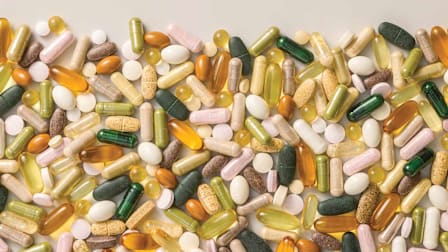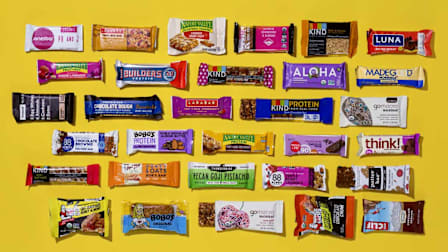Poor Appetite? What It Could Mean.
Eating well is vital for your health. Here's how to feel hungry again.

With all the attention given to helping people eat less to control their weight, it may come as a surprise that the loss of appetite can also be a problem. It’s not uncommon as people age, affecting 15 to 30 percent of older adults.
Feeling less hungry occasionally may not be anything to worry about, but if it persists, it can lead to negative health consequences in older adults, says Mary Hickson, PhD, a professor of dietetics at the University of Plymouth in England. Here’s how to know when a lack of appetite may be harmful and how to help bring it back.
Why You Feel Less Hungry
How appetite works isn’t well understood, but scientists know that the brain and the digestive, endocrine, and nervous systems all play a role.
For example, metabolism slows with age, and that can make food less interesting. Your sense of taste or smell may diminish, and that can affect your appetite, too. Hormonal shifts may dampen the desire to eat and make you feel fuller when you do. Also, "life events can trigger changes in what people eat," Hickson says, such as retirement, loss of a job, or the loss of a partner who did the cooking.
What Happens When You Don't Eat Enough
Taking in fewer calories can cause weight and muscle loss, which can zap energy and affect balance and strength. It also makes it hard to get the vitamins, minerals, and other nutrients you need. "The body requires nutrients for its basic functions, and not getting enough food can cause your body systems to weaken and not work as they should," Cahill says.
Frailty is another consequence, according to a 2022 international task force report on appetite loss and aging. Characterized by weight loss, weakness, being less physically active, exhaustion, and cognitive decline, it can make you more vulnerable to illness and falls, and to having worse outcomes when those occur.
Tips to Boost Appetite
In general, diet and lifestyle changes are preferred over prescription appetite stimulants because the latter don’t help very much and have side effects. Forcing food on yourself isn’t a good move, either, because it can make you queasy, Hickson says. Instead, try the following strategies to help you improve your appetite and stay healthy.
Switch to mini-meals. Can’t manage a full meal? "Start with a smaller portion size of everything you would normally eat, or have a goal of eating half of everything on your plate," says Jen Bruning, RDN, a spokesperson for the Academy of Nutrition and Dietetics. Or try having three smaller meals plus three snacks, Hickson says.
Prioritize protein. It’s important for building and preserving muscle. It also helps fight infection and maintain skin elasticity, so "get some protein on the plate with every meal," Bruning says. And to make sure you get it in, eat it first in case you get too full before you finish your meal. Eggs, cottage cheese, yogurt, fish, tofu, chicken and other lean meats, legumes, and nut butters (almond, peanut, cashew) are all good sources. If you have trouble getting enough protein from food alone, having a protein drink (like Ensure) or adding a scoop of protein powder to smoothies might be appropriate.
Pair fruits and veggies with a dip. Any kind of produce makes a nutrient-rich snack. But they’re low in calories and quite filling. To get more of the vitamins, minerals, and calories you need, serve fruits and vegetables with nutritious higher-calorie dips, such as nut butters, full-fat yogurt, hummus, or guacamole.
Drink water between—not with—meals. You need to stay hydrated, but water can take up room in your stomach. As a result, you may leave too much food on your plate.
Indulge in full-fat foods. Fat is the most concentrated source of calories, and older adults—especially those over 75—can afford to carry a bit more weight, Hickson says. So it’s okay to have full-fat milk, cheese, and yogurt, and butter on your toast.
Use herbs and spices liberally. They add flavor to food, and the aroma as they cook can be an appetite stimulant.
Eat with others when you can. Research shows that you might eat less if you eat alone and that having company might increase your intake.
Little Meals That Pack a Big Nutrition Punch
On average, moderately active men over the age of 50 require 2,200 to 2,400 calories per day to get the fuel and nutrients they need, while women of a similar age and activity level need 1,800 calories. If you’re not feeling very hungry, it can be tough to eat that much food. One solution is to have smaller portions spread out throughout the day and to make sure the food you eat is full of nutrition.
Here’s an example of what a healthy daily menu containing about 2,000 calories might look like.
Breakfast
Soft Taco Scramble: Scramble 1 egg and 2 egg whites with Monterey Jack cheese and ½ cup of fresh baby spinach. Wrap it in an 8-inch whole-wheat tortilla; add salsa. Drink: ¾ cup of low-sodium vegetable juice.
Lunch
Quick lentil soup: Heat 1 cup of canned low-sodium lentil soup with ¼ cup of cooked brown rice and 6 diced baby carrots. Serve with ½ cup of blueberries. Drink: 1 cup of dairy or plant milk.
Dinner
Grill chicken pita: In a whole-wheat pita pocket, add 3 ounces of cooked chicken breast, a slice of cheddar cheese, and mixed greens and tomato tossed with vinaigrette. Serve with an orange. Drink: 1 cup of dairy or plant milk.
Snacks
• ¼ cup of roasted edamame
• 1 wedge of aged goat cheese plus 2 tablespoons of dried tart cherries
• 4 ounces of chocolate pudding with sliced strawberries
Editor’s Note: A version of this article also appeared in the January 2025 issue of Consumer Reports On Health.




















